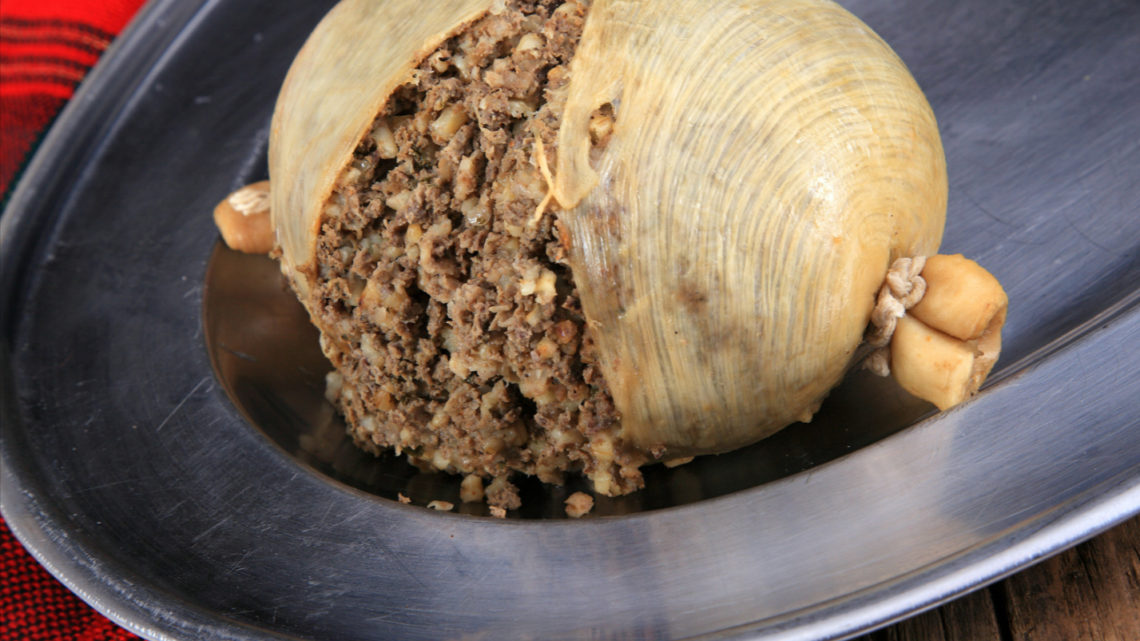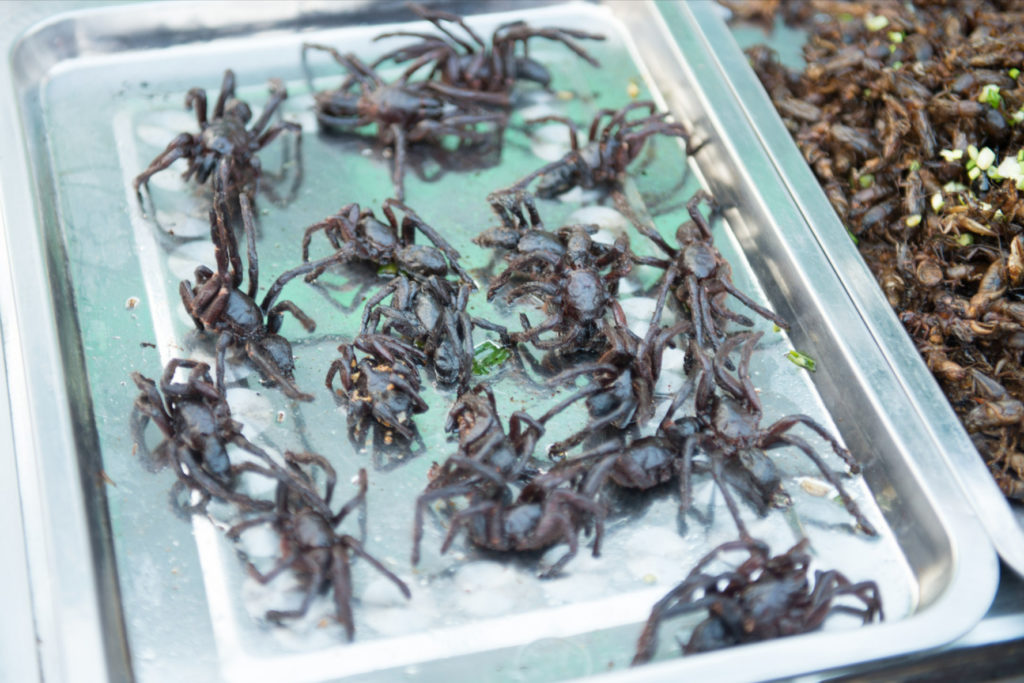
The world’s strangest dishes
Discover the world’s strangest dishes, from Scottish haggis to Filipino balut. Immerse yourself in their stories, preparations and cultural attractions.
This article explores the world’s strangest dishes, each with a unique history, a specific method of preparation and a special place in its local culture. From Scottish sheep offal to Sardinian grub-infested cheese to Japanese puffer fish, these intriguing dishes often defy culinary convention but are deeply rooted in their respective traditions.
The world’s strangest dishes
Haggis – Scotland
History: Haggis, Scotland’s signature dish, probably dates back to the 15th century. Traditionally, it was made from sheep offal (heart, liver, lungs), mixed with onions, oats and spices, then cooked in the animal’s stomach.
Preparation: The offal is finely chopped, mixed with oats, onions and spices, then the stuffing is inserted into a cleaned sheep’s stomach. The whole thing is cooked slowly for several hours.
Cultural appeal: Haggis is particularly celebrated on Burns Night on 25 January, in honour of the poet Robert Burns. It is a strong symbol of Scottish culture, often accompanied by mashed neeps (rutabagas) and tatties (potatoes), with a glass of whisky.

Casu marzu – sardinia
History: Casu marzu is a traditional cheese from Sardinia, often considered the most dangerous in the world. This sheep’s milk cheese is left to ferment until it becomes infested with fly larvae.
Preparation: The cheese is first left in the open air to allow the flies to lay their eggs. The larvae digest the cheese, making its texture very creamy. The cheese is then eaten with the live larvae.
Cultural appeal: Although controversial, casu marzu is a local delicacy in Sardinia, often eaten at festivities and celebrations. Its consumption is a symbol of bravery and authenticity.
Fugu – Japan
History: Fugu, or puffer fish, is a Japanese speciality known for its potentially lethal toxicity if incorrectly prepared. Its history dates back several centuries and it has become a prestigious dish in Japan.
Preparation: The preparation of fugu requires a special licence in Japan. The fish contains a powerful neurotoxin, tetrodotoxin, and only a trained chef can prepare it safely.
Cultural appeal: Considered a test of skill for chefs, fugu is a luxury dish often enjoyed on special occasions. Its consumption is seen as a blend of daring and culinary tradition.

Tiết canh – vietnam
History : Tiết canh is a traditional Vietnamese dish made from raw duck blood mixed with herbs and peanuts. It is often served at family and festive meals.
Preparation: The blood is mixed with a little salted fish water to prevent clotting. It is then poured over pieces of duck meat, peanuts and aromatic herbs.
Cultural appeal: This dish is appreciated for its unique taste and crunchy texture. It symbolises freshness and vitality in Vietnamese culture and is often shared at family gatherings.
Hakarl – Iceland
History: Hakarl is a fermented shark, an Icelandic speciality dating back to the Vikings. The Greenland shark used for this dish is poisonous if not prepared correctly.
Preparation: The shark is buried in sand or stones to ferment for several weeks, then dried for several months. This process eliminates the toxins in the fish.
Cultural appeal: Hakarl is a traditional dish eaten during Icelandic festivals, particularly Þorrablót in January. It is a symbol of Icelandic resilience and ingenuity.

Akutaq – alaska
History: Also known as “Eskimo ice”, akutaq is a traditional Alaskan Inuit preparation used as a source of energy during long hunting expeditions.
Preparation: It is made from animal fat (often seal or caribou fat), mixed with local berries and sometimes fish.
Cultural appeal: Akutaq is eaten during community ceremonies and celebrations. It represents the Inuit connection with their environment and ancestral food traditions.
Escamoles – Mexico
History: Escamoles are ant eggs harvested from the roots of agaves. This dish has been eaten since pre-Columbian times, particularly by the Aztecs.
Preparation: The eggs are delicately harvested and often cooked with butter and spices, then served in tacos or omelettes.
Cultural appeal: Compared to caviar in terms of texture and price, escamoles are considered a delicacy in Mexico. They are appreciated for their subtle flavour and unique crunchiness.

Balut – Philippines
History: Balut is a fertilised duck egg containing a partially developed embryo. This dish is popular in the Philippines and other parts of Southeast Asia.
Preparation: The egg is boiled and eaten directly in its shell, with salt, vinegar or spices. It is generally eaten when it is between 14 and 21 days old.
Cultural appeal: Considered an aphrodisiac and fortifying food, balut is often sold by street vendors and eaten at social evenings and celebrations.
Fried spider – cambodia
History: Fried spiders, mainly tarantulas, are a Cambodian speciality, particularly popular in the town of Skuon.
Preparation: Spiders are fried with garlic and salt until crispy. They are often eaten as a snack.
Cultural appeal: This dish has become a tourist attraction, but it is also eaten by locals for its supposed medicinal properties and as a source of protein.

prairie oysters – canada
History: Also known as “Rocky Mountain oysters”, these fried bulls’ testicles are a specialty of the ranching regions of North America.
Preparation: The testicles are peeled, boiled, then breaded and fried. They are often served with a hot sauce.
Cultural appeal: Eaten at rodeo festivals and barbecues, prairie oysters are a symbol of cowboy culture and the integral use of the animal in the diet.